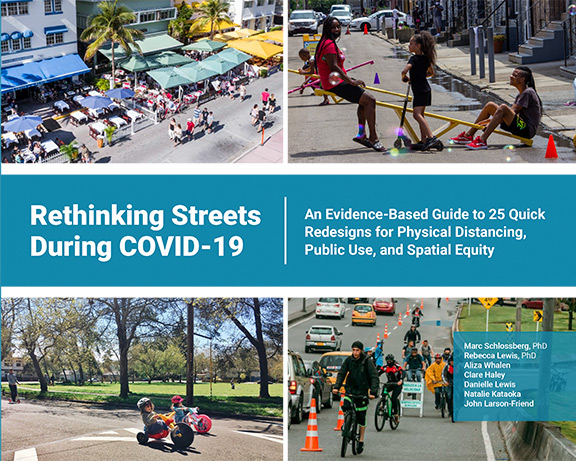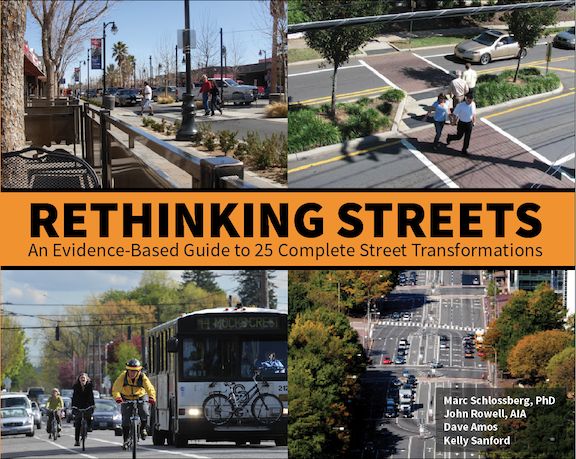Rethinking Streets During COVID-19
Re-allocating space on streets to accommodate new uses – particularly for walking, biking, and being – is not new. COVID-era needs have accelerated the process that many communities use to make such street transitions, however. Many communities quickly understood that the street is actually a public place and a public good that serves broader public needs more urgent than the free flow or the storage of private vehicles. This book captures some of these quick changes to city streets in response to societal needs during COVID, with two open questions: 1) what changes will endure post-COVID?; and 2) will communities be more open to street reconfigurations, including quick and inexpensive trials, going forward? We hope you look at the examples in this book and find ones that could work in your community and then use your voice to help implement your own local version of what you see here. Enjoy!
Download your copy here

Authors: Marc Schlossberg, PhD; Rebecca Lewis, PhD; Aliza Whalen; Clare Haley; Danielle Lewis; Natalie Kataoka; John Larson-Friend
Rethinking Streets for Bikes
Rethinking Streets for Bikes highlights high-quality street retrofit projects that prioritize bicycle transportation. Each case study includes information for key stakeholders, including transportation engineers, planners, policy makers, and community members. The case studies are diverse; there are seven different project types in cities across the United States and Canada.
Download your copy here
This project was supported by the National Institute for Transportation and Communities (NITC) and you can also download this book directly from their site.
Authors: Marc Schlossberg, PhD; Roger Lindgren,Phd, PE; Dave Amos, AICP; John Rowell, AIA
It’s time to rethink the street.
For too long we’ve been building streets as though they have one function–to move cars quickly. The reality is that streets can to do more than just move cars. They can move people on foot, on bikes, on transit, without hurting vehicular throughput and safety. They can be more than a way to get somewhere else. Good streets are good places, too – public places where people meet, sit and socialize, conduct business, wander about, play, and more.
This new book uses evidence from completed street projects from around the United States in order to help communities imagine alternative futures for their streets. The book does not show hypothetical street re-designs, but actual examples from typical communities to show how they did what they did and see what resulted from the change.
You can receive a copy of Rethinking Streets in one of three ways:
For more information, please contact Marc Schlossberg at the University of Oregon's Sustainable Cities Institute.

Authors: Marc Schlossberg, PhD, John Rowell, AIA, Dave Amos, Kelly Sanford

